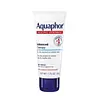What's inside
What's inside
 Key Ingredients
Key Ingredients

No key ingredients
 Benefits
Benefits

 Concerns
Concerns

 Ingredients Side-by-side
Ingredients Side-by-side

Water
Skin ConditioningUrea
BufferingGlycerin
HumectantCetearyl Alcohol
EmollientCaprylic/Capric Triglyceride
MaskingGlyceryl Stearate
EmollientOctyldodecanol
EmollientHydrogenated Coco-Glycerides
EmollientEthylhexyl Cocoate
EmollientSodium Lactate
BufferingGlyceryl Stearate Se
EmulsifyingDistarch Phosphate
AbsorbentCeramide NP
Skin ConditioningLactic Acid
BufferingSodium PCA
HumectantArginine Hcl
Skin ConditioningGlycine
BufferingAlanine
MaskingCarnitine
CleansingCholesterol
EmollientHelianthus Annuus Seed Oil
EmollientSorbitan Stearate
EmulsifyingDimethicone
EmollientPhenoxyethanol
PreservativeCarbomer
Emulsion StabilisingSodium Cetearyl Sulfate
CleansingSodium Chloride
MaskingWater, Urea, Glycerin, Cetearyl Alcohol, Caprylic/Capric Triglyceride, Glyceryl Stearate, Octyldodecanol, Hydrogenated Coco-Glycerides, Ethylhexyl Cocoate, Sodium Lactate, Glyceryl Stearate Se, Distarch Phosphate, Ceramide NP, Lactic Acid, Sodium PCA, Arginine Hcl, Glycine, Alanine, Carnitine, Cholesterol, Helianthus Annuus Seed Oil, Sorbitan Stearate, Dimethicone, Phenoxyethanol, Carbomer, Sodium Cetearyl Sulfate, Sodium Chloride
 Reviews
Reviews

Ingredients Explained
These ingredients are found in both products.
Ingredients higher up in an ingredient list are typically present in a larger amount.
Glycerin is already naturally found in your skin. It helps moisturize and protect your skin.
A study from 2016 found glycerin to be more effective as a humectant than AHAs and hyaluronic acid.
As a humectant, it helps the skin stay hydrated by pulling moisture to your skin. The low molecular weight of glycerin allows it to pull moisture into the deeper layers of your skin.
Hydrated skin improves your skin barrier; Your skin barrier helps protect against irritants and bacteria.
Glycerin has also been found to have antimicrobial and antiviral properties. Due to these properties, glycerin is often used in wound and burn treatments.
In cosmetics, glycerin is usually derived from plants such as soybean or palm. However, it can also be sourced from animals, such as tallow or animal fat.
This ingredient is organic, colorless, odorless, and non-toxic.
Glycerin is the name for this ingredient in American English. British English uses Glycerol/Glycerine.
Learn more about Glycerin